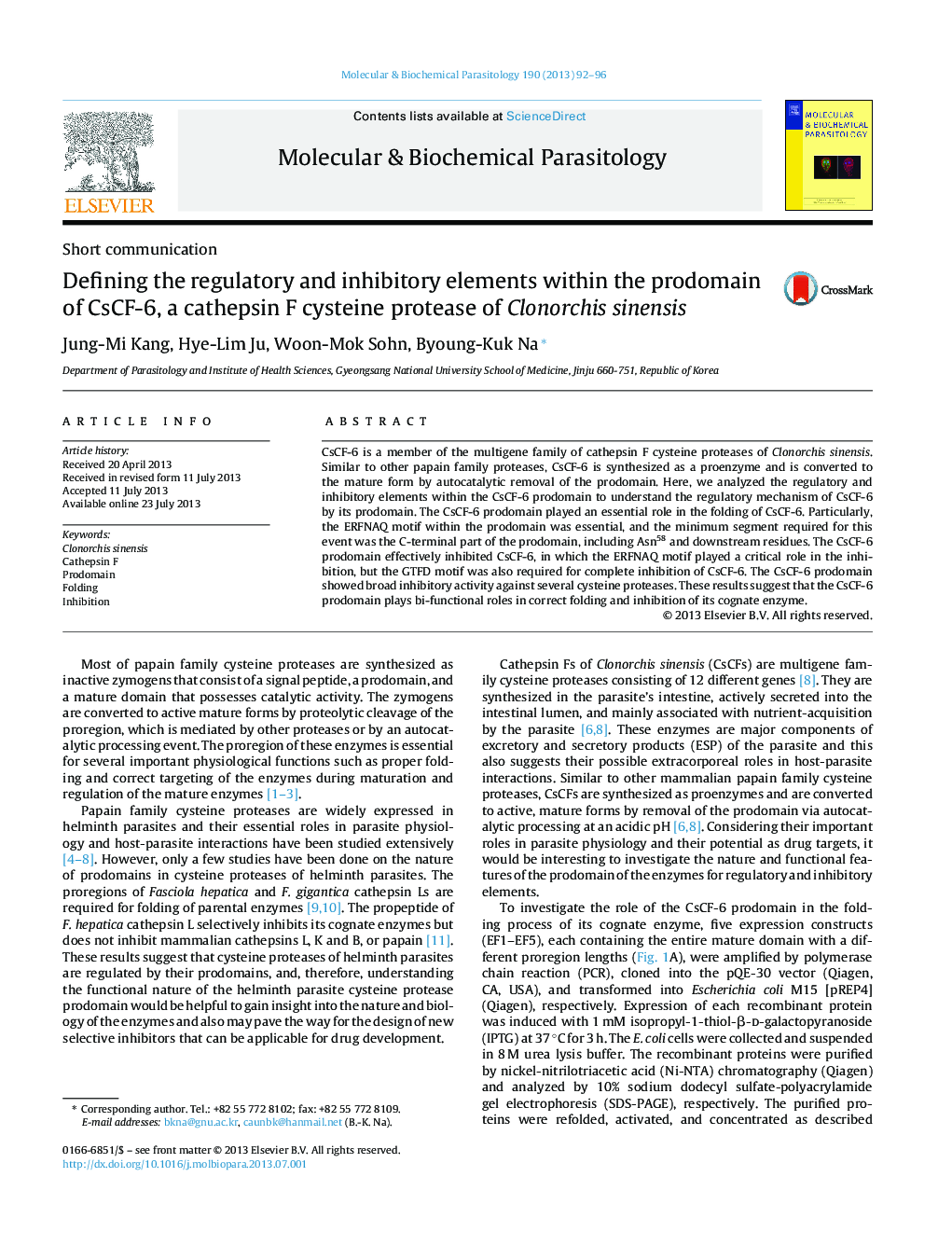| Article ID | Journal | Published Year | Pages | File Type |
|---|---|---|---|---|
| 5915470 | Molecular and Biochemical Parasitology | 2013 | 5 Pages |
â¢The prodomain of CsCF-6 plays bi-functional roles of folding and inhibition of CsCF-6.â¢The prodomain of showed broad inhibitory activity against several cysteine proteases.â¢The bi-functional roles of the prodomain relied on ERFNAQ and GTFD motifs.
CsCF-6 is a member of the multigene family of cathepsin F cysteine proteases of Clonorchis sinensis. Similar to other papain family proteases, CsCF-6 is synthesized as a proenzyme and is converted to the mature form by autocatalytic removal of the prodomain. Here, we analyzed the regulatory and inhibitory elements within the CsCF-6 prodomain to understand the regulatory mechanism of CsCF-6 by its prodomain. The CsCF-6 prodomain played an essential role in the folding of CsCF-6. Particularly, the ERFNAQ motif within the prodomain was essential, and the minimum segment required for this event was the C-terminal part of the prodomain, including Asn58 and downstream residues. The CsCF-6 prodomain effectively inhibited CsCF-6, in which the ERFNAQ motif played a critical role in the inhibition, but the GTFD motif was also required for complete inhibition of CsCF-6. The CsCF-6 prodomain showed broad inhibitory activity against several cysteine proteases. These results suggest that the CsCF-6 prodomain plays bi-functional roles in correct folding and inhibition of its cognate enzyme.
Graphical abstractDownload high-res image (154KB)Download full-size image
